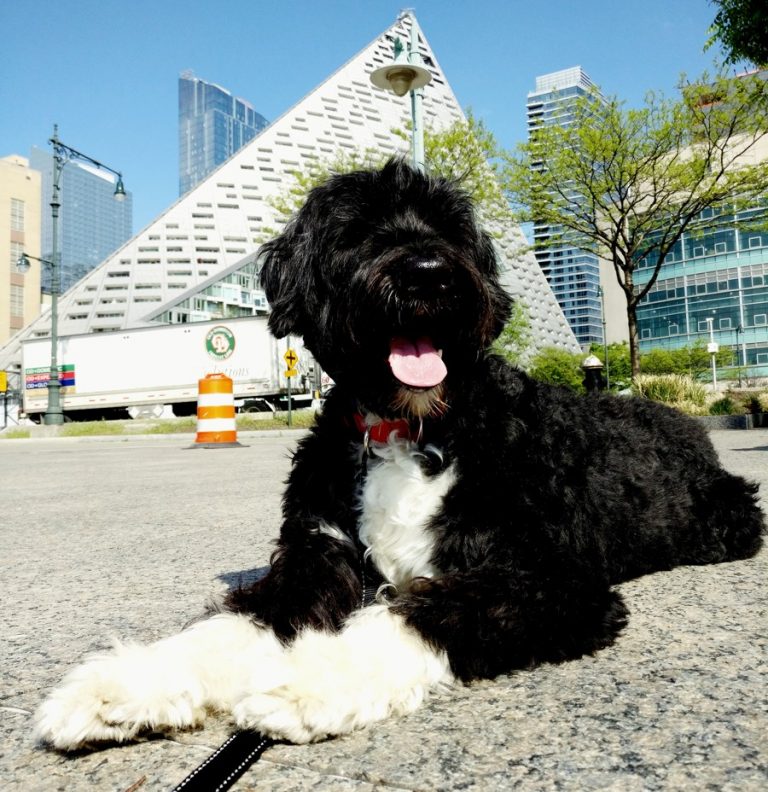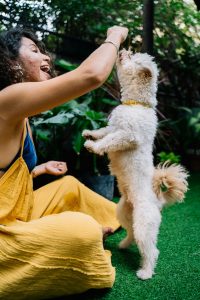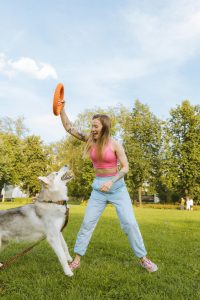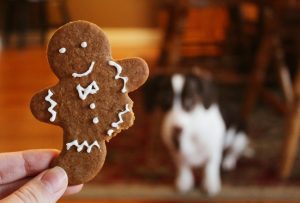We often say people have urges. It is something we do to get only immediate gratification in mind and little consideration for potential consequences. Simply said, urges are a compulsion to act or react in a certain manner. Dogs are no different.
Our dogs and pets have needs and urges like going outside, getting out of the crate, getting the ball, and more. Often, your dog’s urges override any sense of safety or comfort. I cannot count how many times when he was young, Milo would go run after something without looking left or right. Truth be told, he still does it to this day.
Now, while you cannot stop all urges, you can modify your dog’s behavior in a way that is safer for him, the environment, and yourself. How do you do that? By teaching your furry friend to ask for permission.
What is impulse control?
Asking for permission is part of the impulse control training. Now, a lot of you will wonder what is impulse control.
Simply said, impulse control involves teaching your dog that it will not be rewarded for bad behavior. Sometimes, trainers teach impulse control by correcting bad behavior. Yet, we opt for a different approach, and that is rewarding and giving attention only when the dog displays good behavior.
We have several ways to teach impulse control. For example, training your puppy to obey certain commands that demand to divert your puppy’s attention from distractions. For example, commands and cues like watch me, leave it, wait, and many more.
What I have to stress is that impulse control is not something your dog learns once, and that is it. Quite the contrary. It is something that you practice over and over again.
In time, your dog will learn to reconsider improper actions. For example, instead of jumping on you, its owner, and pet parent, it will sit and wait for praise.
Does your dog need impulse control training?
Now, you are probably saying, my dog is great. I do not need any impulse control practice. Well, remember, dogs are opportunistic creatures. If they can do something, it is more likely that they will do it. And if you reinforce that behavior, knowingly or unknowingly, they will do it even more.
Here is an example, one of the classic mistakes people make is they reinforce their dog jumping on people.
Here are some behaviors that scream your dog needs to practice impulse control.
- Jumping on people
- Eating stuff from the ground
- Demand barking to play or give attention
- Darting out of doorways and car doors
- Chasing small animals or moving objects
- Pulling on leash
- Throwing tantrums when they meet other people and dogs
What are the benefits of impulse control?
I said in the beginning, every dog needs to practice impulse control. There are just so many benefits to this type of training to ignore it.
First and foremost, when you teach your dog to control its impulses, you get a calmer and more relaxed dog. For example, many dogs have an urge to rush out of the door in order to get outside. They pull until they get outside, and pull even more when they are out.
But this is dangerous for the dog, yourself, and for other people in the environment. Your puppy can be taught to sit and wait for a command or cue like okay, free, and similar before crossing the threshold.
Teaching your dog to ask for permission
One of the first things you need to practice when it comes to impulse control is asking for permission. After all, your dog has to understand and learn that you are the leader. You are the one setting the bar. You are the one setting the rules.
You can practice this daily with different thresholds. And the fun part is, that you can turn it into a game. For example, when you feed your dog, you can release him, and when you go on an off-leash hike or trail. Here is a quick game you can play to learn waiting and asking for permission.
- Start by taking two pieces of dog food or kibble and holding each piece in a fist in either hand
- Ask your dog to sit or lie down. Personally, I go with sit
- When your dog sits, wait for it to look you in the eye, and mark that behavior with yes and reward with one hand
- Repeat the game but switch hands each time your dog establishes an eye contact
- As your dog is getting better, increase the duration of the eye contact by a few seconds each time
Soon, your dog will understand that in order to get what they want, in this case, food, they have to “ask for permission” by looking at you. Practice this game with toys, or when you are outside. For example, have your dog off-leash, but do not release him until he establishes eye contact. After that, release your puppy to go around and sniff.
Warning: in the beginning, your dog will most likely sniff your hand or paw at your hand to get the treat. Do not open the fist. Keep it closed and create space if you need to. Be patient until you get eye contact.







